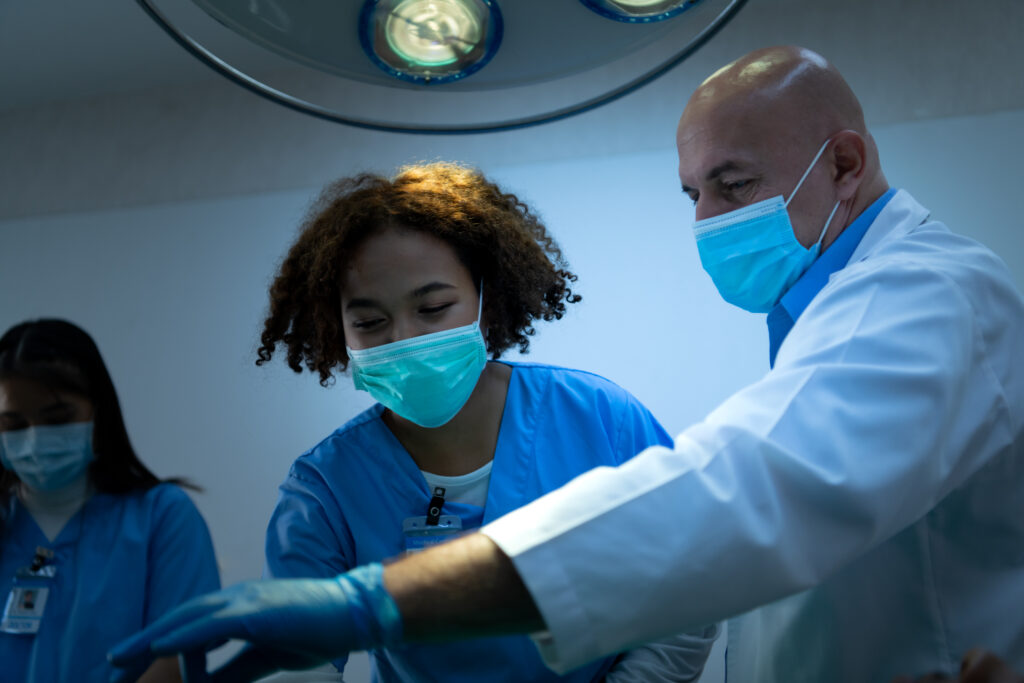
Update on PEPPER, Discharge Planning Guidelines, and Coding AMA Discharges
Let’s start with some updates. We have all been Program for Evaluating Payment Patterns Electronic Report (PEPPER)-free for quite a while now, but I can

Dialysis circuit coding contains a multitude of codes, each with its own nuances and rationale. CPT® gives options for code choices that are built upon a hierarchy, from procedures performed within the dialysis circuit through access directly into the circuit. Although there are several options based on the coding scenario, coders and compliance personnel must remember that only one code from 36901–36906 may be reported for the same session. While not discussed in this insight, be aware that 36907–36909 are add-on codes in this series. These add-on codes, when appropriate, must be reported with one code from the 36901–36906 series. Let’s discuss some of the main codes that comprise this series.
Code 36901 may be reported for direct access into the dialysis circuit for diagnostic imaging. However, this code is only reported for scenarios without any subsequent therapeutic intervention in the peripheral segment during the same session.
Note that you should not report 36901 with 36902, 36903, 36904, 36905, or 36906. However, 36901 may be reported for diagnostic imaging of the dialysis circuit in addition to the procedures described for add-on codes 36907–36908.
What does 36901 include? It details one or more accesses into the dialysis graft/fistula and imaging of the entire dialysis graft circuit from the arterial anastomosis through the central veins. If the catheter must be maneuvered up to and into the vena cava or across the arterial anastomosis to better visualize the graft, those catheterizations are included in 36901. Understand that code 36901 also encompasses catheterization and imaging of venous side branches, when necessary.
When a dialysis fistulagram is performed without further intervention within the peripheral segment of the dialysis circuit, report code 36901 with modifier 52, if the fistulagram is accomplished by injection of contrast into an existing access.
| 36902 | Introduction of needle(s) and/or catheter(s), dialysis circuit, with diagnostic angiography of the dialysis circuit, including all direct puncture(s) and catheter placement(s), injection(s) of contrast, all necessary imaging from the arterial anastomosis and adjacent artery through entire venous outflow including the inferior or superior vena cava, fluoroscopic guidance, radiological supervision and interpretation and image documentation and report; with transluminal balloon angioplasty, peripheral dialysis segment, including all imaging and radiological supervision and interpretation necessary to perform the angioplasty |
Code 36902 should be reported when diagnostic angiography of the dialysis circuit is performed along with angioplasty within the peripheral segment. It may be tempting to report 36902 for every lesion treated; however, this code may be reported only once, regardless of the lesion number. Code 36902 includes angioplasty of the arterial peri-anastomotic area. Angioplasty codes (37246–37249) may not be reported for angioplasties within the dialysis circuit. Also, note that 36901 must not be reported in addition to 36902. Moreover, for balloon removal of the arterial plug, do not report 36902. In this instance, see code 36904.
| 36903 | Introduction of needle(s) and/or catheter(s), dialysis circuit, with diagnostic angiography of the dialysis circuit, including all direct puncture(s) and catheter placement(s), injection(s) of contrast, all necessary imaging from the arterial anastomosis and adjacent artery through entire venous outflow including the inferior or superior vena cava, fluoroscopic guidance, radiological supervision and interpretation and image documentation and report; with transcatheter placement of intravascular stent(s), peripheral dialysis segment, including all imaging and radiological supervision and interpretation necessary to perform the stenting, and all angioplasty within the peripheral dialysis segment |
Code 36903 is reported for diagnostic imaging of the dialysis circuit plus stent placement in the peripheral segment. Angioplasty, if performed, is included in this code and is not separately reported, even when separate lesions are treated. Report code 36903 only once, regardless of the number of stents placed within the peripheral segment. Do not report codes 36901 and/or 36902 with 36903.
| 36904 | Percutaneous transluminal mechanical thrombectomy and/or infusion for thrombolysis, dialysis circuit, any method, including all imaging and radiological supervision and interpretation, diagnostic angiography, fluoroscopic guidance, catheter placement(s), and intraprocedural pharmacological thrombolytic injection(s); |
When is 36904 reported vs 36903? Report 36904 for diagnostic imaging plus mechanical thrombectomy and/or thrombolytic infusion within the dialysis circuit. This code includes thrombectomy and/or infusion in the peripheral and/or central segments. Code 36904 includes lyse-and-wait technique, use of Trerotola® or other mechanical devices, suction of thrombus, removal of the arterial plug, intra-graft thrombolysis, and balloon maceration of thrombus.
Do not report codes 36901, 36902, or 36903 along with 36904.
These are not all the necessary coding tips and rationale essential for basic interventional radiology knowledge and dialysis circuit coding. As service volumes rebound and every dollar counts more than ever, it is imperative to make sure your CPT® coding is correct and compliant. Master more interventional radiology topics and break down the complexity with our expert-infused Diagnostic and Therapeutic Dialysis Shunt Interventional Radiology Coding webcast. This webcast is an essential training tool for both audio and visual learners.


Let’s start with some updates. We have all been Program for Evaluating Payment Patterns Electronic Report (PEPPER)-free for quite a while now, but I can

The Centers for Medicare & Medicaid Services (CMS) is once again proposing to eliminate the inpatient only list starting in January 2026, repeating the process
Please log in to your account to comment on this article.

Sepsis remains one of the most frequently denied and contested diagnoses, creating costly revenue loss and compliance risks. In this webcast, Angela Comfort, DBA, MBA, RHIA, CDIP, CCS, CCS-P, provides practical, real-world strategies to align documentation with coding guidelines, reconcile Sepsis-2 and Sepsis-3 definitions, and apply compliant queries. You’ll learn how to identify and address documentation gaps, strengthen provider engagement, and defend diagnoses against payer scrutiny—equipping you to protect reimbursement, improve SOI/ROM capture, and reduce audit vulnerability in this high-risk area.

Only ICD10monitor delivers what you need: updates on must-know changes associated with the FY26 IPPS, including new ICD-10-CM/PCS codes, CCs/MCCs, and MS-DRGs, plus insights, analysis and answers to your questions from two of the country’s most respected subject matter experts.

This third session in our 2026 IPPS Masterclass will feature a review of FY26 changes to the MS-DRG methodology and new technology add-on payments (NTAPs), presented by nationally recognized ICD-10 coding expert Christine Geiger, MA, RHIA, CCS, CRC, with bonus insights and analysis from Dr. James Kennedy.

This second session in our 2026 IPPS Masterclass will feature a review the FY26 changes to ICD-10-PCS codes. This information will be presented by nationally recognized ICD-10 coding expert Christine Geiger, MA, RHIA, CCS, CRC, with bonus insights and analysis from Dr. James Kennedy.

During this essential RACmonitor webcast Michael Calahan, PA, MBA Certified Compliance Officer, will clarify the rules, dispel common misconceptions, and equip you with practical strategies to code, document, and bill high-risk split/shared, incident-to & critical care E/M services with confidence. Don’t let audit risks or revenue losses catch your organization off guard — learn exactly what federal auditors are looking for and how to ensure your documentation and reporting stand up to scrutiny.

Learn how to navigate the proposed elimination of the Inpatient-Only list. Gain strategies to assess admission status, avoid denials, protect compliance, and address impacts across Medicare and non-Medicare payors. Essential insights for hospitals.

RACmonitor is proud to welcome back Dr. Ronald Hirsch, one of his most requested webcasts. In this highly anticipated session, Dr. Hirsch will break down the complex Two Midnight Rule Medicare regulations, translating them into clear, actionable guidance. He’ll walk you through the basics of the rule, offer expert interpretation, and apply the rule to real-world clinical scenarios—so you leave with greater clarity, confidence, and the tools to ensure compliance.

Bring your questions and join the conversation during this open forum series, live every Wednesday at 10 a.m. EST from June 11–July 30. Hosted by Chuck Buck, these fast-paced 30-minute sessions connect you directly with top healthcare experts tackling today’s most urgent compliance and policy issues.
CYBER WEEK IS HERE! Don’t miss your chance to get 20% off now until Dec. 2 with code CYBER24